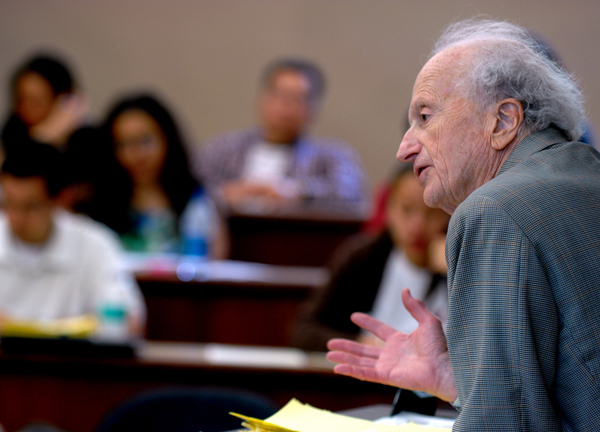Mansueto rising
 Like the tiers of a wedding cake, scaffolding has appeared over the big hole in the ground that will soon become the Joe and Rika Mansueto Library. Built to facilitate construction of the library’s elliptical glass dome, the structure went up in late April.
Like the tiers of a wedding cake, scaffolding has appeared over the big hole in the ground that will soon become the Joe and Rika Mansueto Library. Built to facilitate construction of the library’s elliptical glass dome, the structure went up in late April.
Over the next four months, passers-by will be able to watch as the library's distinctive oval dome takes shape. First, a high-strength steel and aluminum grid will rise from the foundation up. When the grid is in place August 1, glass panels will be installed from top to bottom.
When I visited the work site recently, a tall crane swung bundles of sleek, silver tubing from a truck to the ground. The tubing was made in the Czech Republic and delivered directly to Chicago. To create the grid, workers will bolt together more than 700 six-foot tubes and nodes, "like a giant erector set," explained Michael Natarus, senior project manager. Special tools have been manufactured just to put the components together.
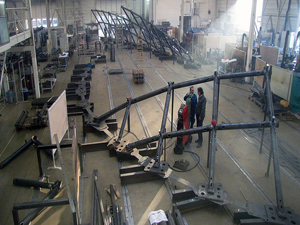 Although Helmut Jahn designed the library, the current phase reflects the genius of architect and structural engineer Werner Sobek. "He takes Helmut’s ideas and does the structural calculations," says Natarus. Following Sobek’s specifications, Seele, the German company hired to build the library dome, recently did a successful test-run of the grid assembly at its plant near Augsburg. The pieces are designed to fit "within a tenth of a millimeter," said Tobias Karnagel, site manager. That level of precision is unusual, but necessary for ensuring that the frame will bear the weight of the glass.
Although Helmut Jahn designed the library, the current phase reflects the genius of architect and structural engineer Werner Sobek. "He takes Helmut’s ideas and does the structural calculations," says Natarus. Following Sobek’s specifications, Seele, the German company hired to build the library dome, recently did a successful test-run of the grid assembly at its plant near Augsburg. The pieces are designed to fit "within a tenth of a millimeter," said Tobias Karnagel, site manager. That level of precision is unusual, but necessary for ensuring that the frame will bear the weight of the glass.
Seele did steel-and-glass construction for the new U.S. Institute of Peace in Washington, DC; high-profile Apple Stores in New York City and around the world; and many other projects. Two workmen on the Mansueto crew helped assemble Anish Kapoor’s Cloud Gate in Millennium Park, but according to Natarus, "nobody has worked on anything like this before."
 Below ground, work on the library is also progressing. When Natarus led me down into the vast, five-story-deep cavern that will eventually house an automated storage and retrieval system for 3.5 million volumes, the massive scale of the project hit home. The space, now mostly empty, is gargantuan. I felt like a tiny flea in the bottom of a deep, dark mixing bowl.
Below ground, work on the library is also progressing. When Natarus led me down into the vast, five-story-deep cavern that will eventually house an automated storage and retrieval system for 3.5 million volumes, the massive scale of the project hit home. The space, now mostly empty, is gargantuan. I felt like a tiny flea in the bottom of a deep, dark mixing bowl.
But the giant oval won’t be empty much longer. Fireproofing, duct work, and construction of a corridor to the Regenstein Library are moving forward. Air-handling units, which will maintain the temperature and humidity in the book stacks, have already been delivered. A concrete slab now separates the Mansueto basement from the ground floor, the future home of a sunny reading room. And the dome is expected to be finished this fall.
Elizabeth Station
RELATED LINKS
Mansueto WebCam
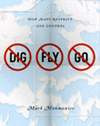 Geographer Mark Monmonier explores maps' restrictive powers in
Geographer Mark Monmonier explores maps' restrictive powers in  In February the Peace Corps
In February the Peace Corps 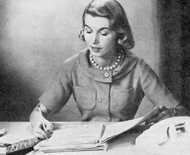 Whether you're craving a summer internship, looking to change careers, or seeking employment after being downsized, the face-to-face interview is a critical part of landing your dream job. To give candidates a leg up, UChicago's
Whether you're craving a summer internship, looking to change careers, or seeking employment after being downsized, the face-to-face interview is a critical part of landing your dream job. To give candidates a leg up, UChicago's 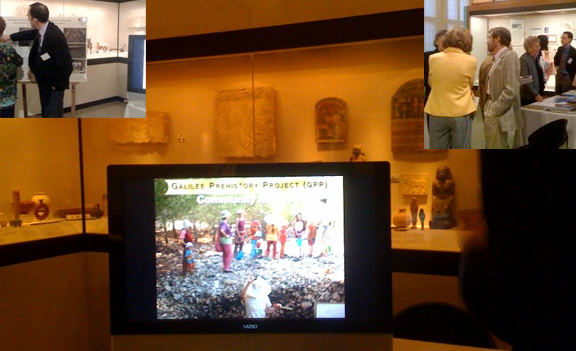 When the Oriental Institute invited friends and supporters to “Check Out Our Digs!” at an April 28
When the Oriental Institute invited friends and supporters to “Check Out Our Digs!” at an April 28 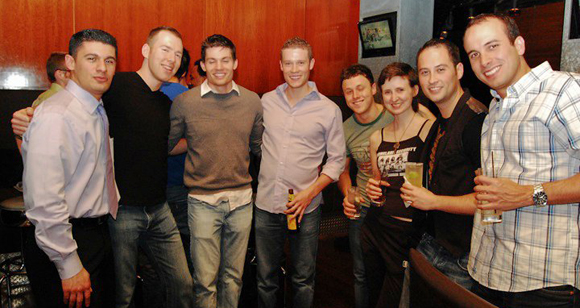 Whether you're a recent graduate or an emeritus, chances are you've been invited to a U of C happy hour. One of the most common type of alumni events, they are usually planned for alumni of a certain generation or region, but a recent trend has some of the guest lists getting more creative.
Whether you're a recent graduate or an emeritus, chances are you've been invited to a U of C happy hour. One of the most common type of alumni events, they are usually planned for alumni of a certain generation or region, but a recent trend has some of the guest lists getting more creative.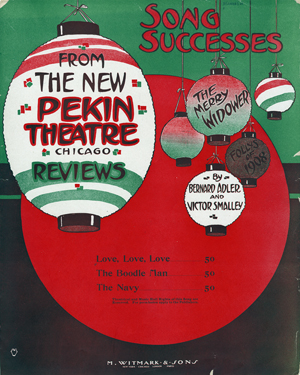 In June 2000, when lifelong jazz aficionado John Steiner bequeathed his collection of recordings and other materials to the University, jazz archivist Deborah Gillaspie, AM’88, walked into Steiner’s basement to find an extraordinary collection, remarkable for its unmatched contents—and its nonexistent organization.
In June 2000, when lifelong jazz aficionado John Steiner bequeathed his collection of recordings and other materials to the University, jazz archivist Deborah Gillaspie, AM’88, walked into Steiner’s basement to find an extraordinary collection, remarkable for its unmatched contents—and its nonexistent organization.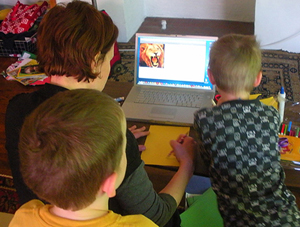 Aha! I propose the idea of an experiment to Kid A: What uses the most electricity?
Aha! I propose the idea of an experiment to Kid A: What uses the most electricity?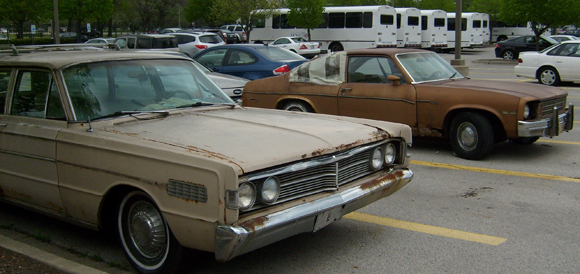

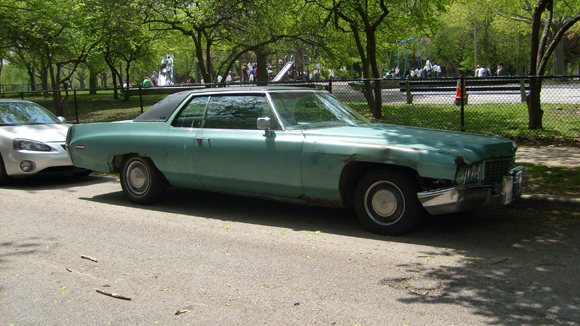
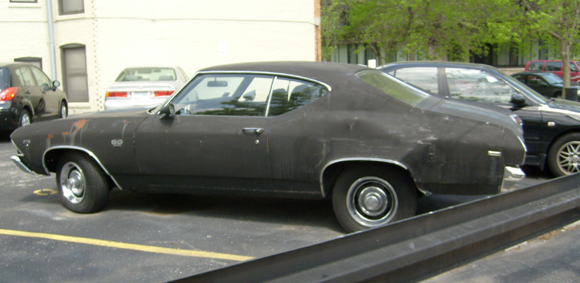
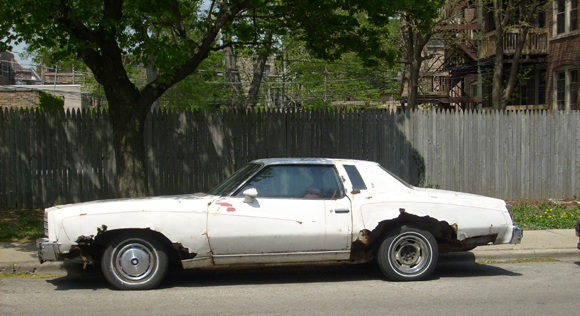
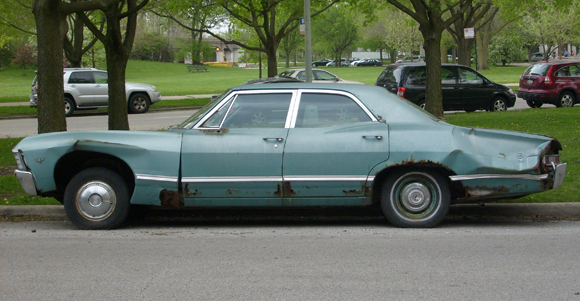

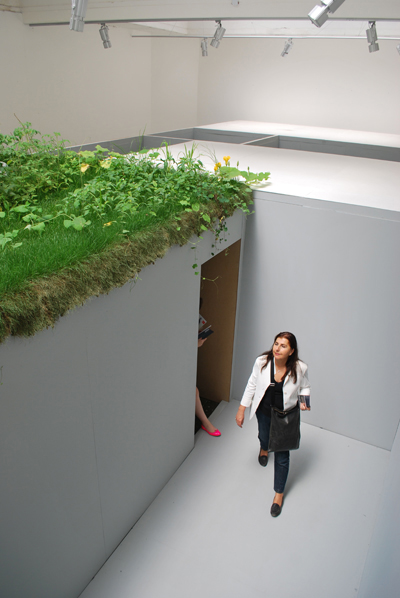 “Seductiveness” starts on a dark note with Ştefan Constantinescu’s fictional film Troleibuzul 92. In the piece a 20-something man boards a bus and sits next to an older woman with a chin-length bob. After a few moments, he pulls out a cell phone and makes repeated calls to his wife or girlfriend, unleashing a threatening tirade each time: “Tell me—who were you talking to? I’m getting off now to take a cab. I’ll be there in ten minutes. I’ll thrash you ‘til you tell, drench you in blood, I will.”
“Seductiveness” starts on a dark note with Ştefan Constantinescu’s fictional film Troleibuzul 92. In the piece a 20-something man boards a bus and sits next to an older woman with a chin-length bob. After a few moments, he pulls out a cell phone and makes repeated calls to his wife or girlfriend, unleashing a threatening tirade each time: “Tell me—who were you talking to? I’m getting off now to take a cab. I’ll be there in ten minutes. I’ll thrash you ‘til you tell, drench you in blood, I will.” 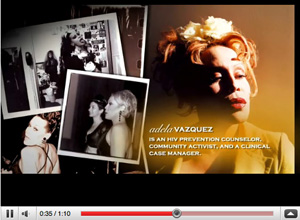
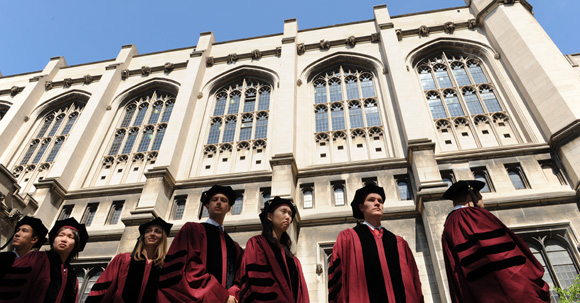
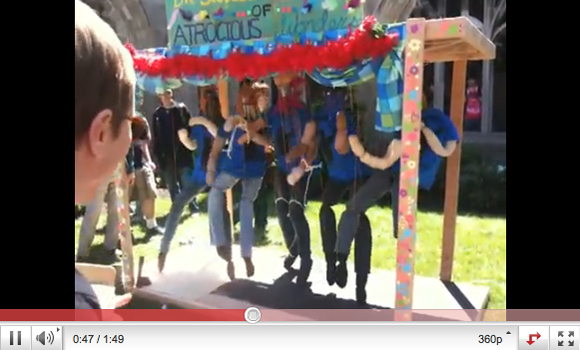
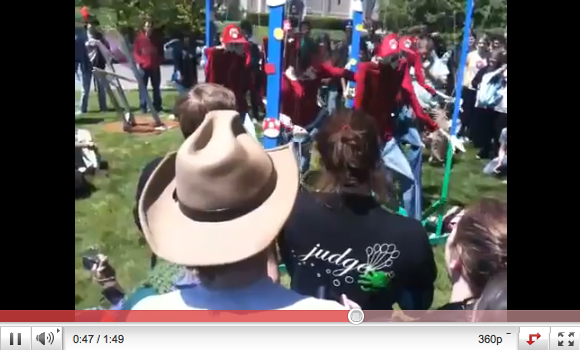
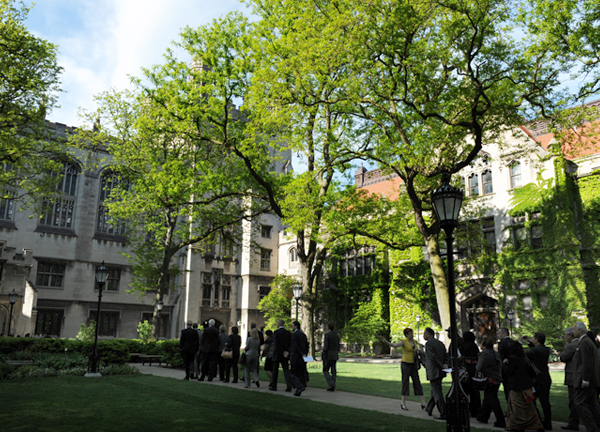
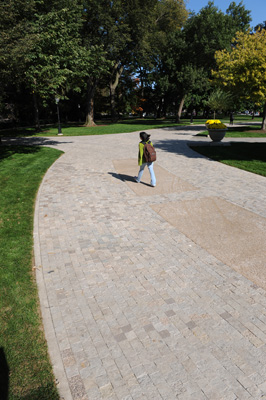 On a trip to Chicago, Gerszberg and her daughter, a high-school junior, visited both the U of C and Northwestern. In Hyde Park the campus tour alone convinced Gerszberg’s daughter the school was not for her. “I just don’t feel it in my soul,” she said during the tour, because “everyone is walking alone.” She asked her mom if they could skip the subsequent information session. Those
On a trip to Chicago, Gerszberg and her daughter, a high-school junior, visited both the U of C and Northwestern. In Hyde Park the campus tour alone convinced Gerszberg’s daughter the school was not for her. “I just don’t feel it in my soul,” she said during the tour, because “everyone is walking alone.” She asked her mom if they could skip the subsequent information session. Those 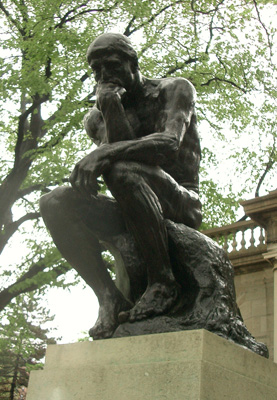 Getting old? Enjoy some dark chocolate and let the antioxidants work their anti-aging magic. Having trouble concentrating? Drink coffee for caffeine’s focus power. Feeling bummed out? Pop some mood-boosting herbs like St. John’s wort or ginkgo biloba.
Getting old? Enjoy some dark chocolate and let the antioxidants work their anti-aging magic. Having trouble concentrating? Drink coffee for caffeine’s focus power. Feeling bummed out? Pop some mood-boosting herbs like St. John’s wort or ginkgo biloba.